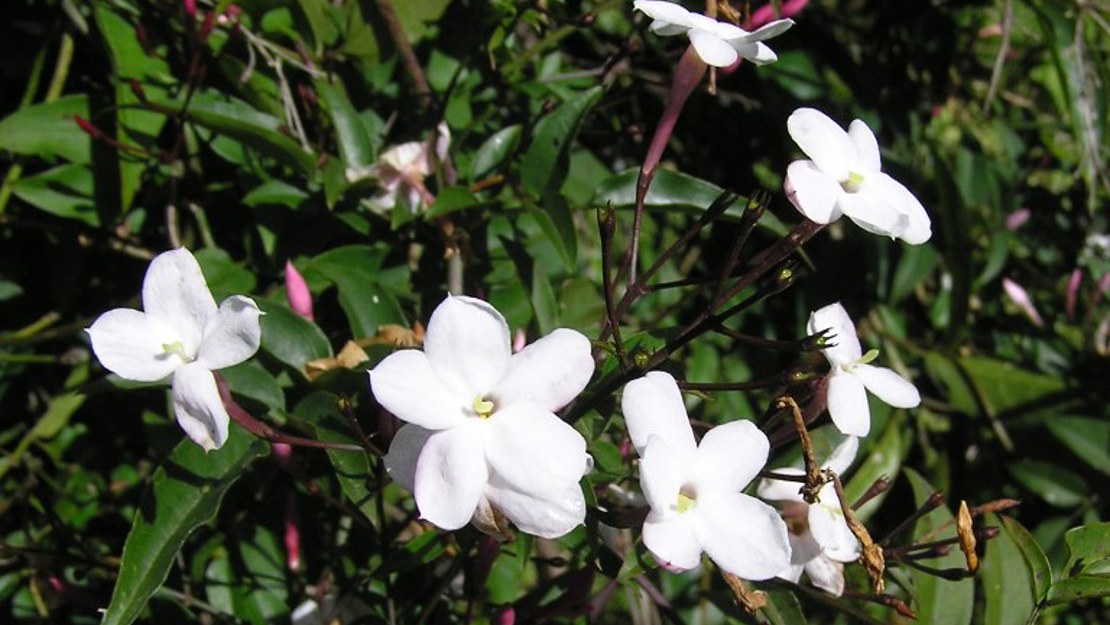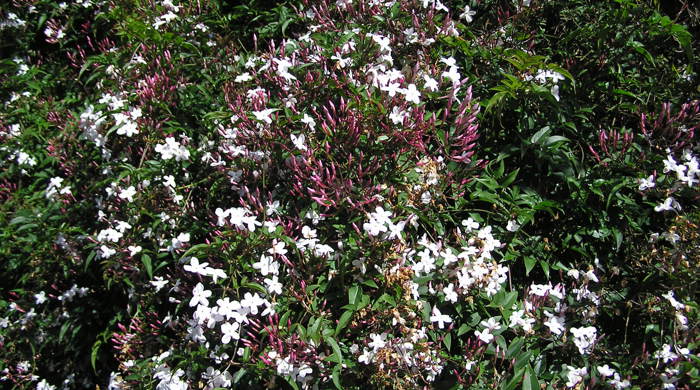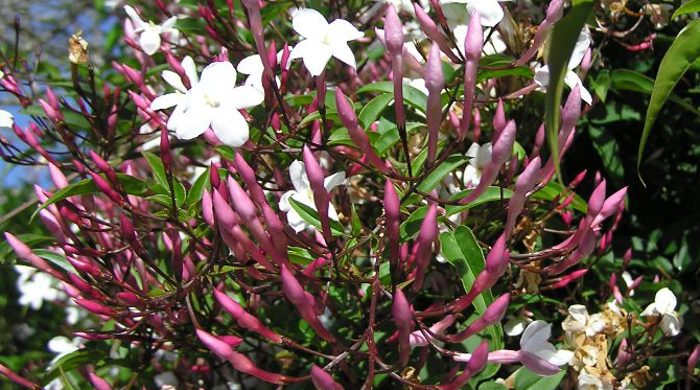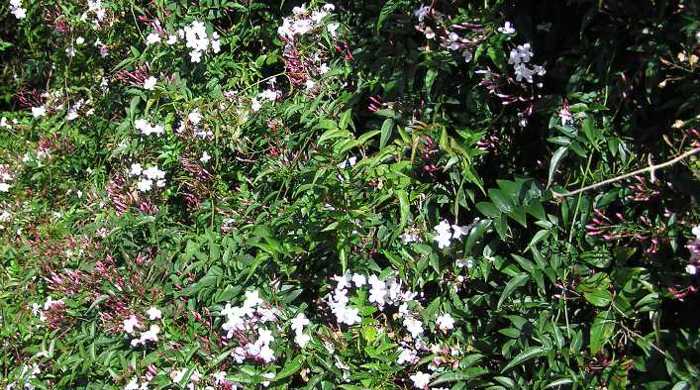Jasminum polyanthum
Jasmine
Also known as:
Pink jasmine, white jasmine
Family: Oleaceae
Origin: China

Regional Pest Management Plan (RPMP) status
- Whole region — Sustained control
- Waitākere Ranges Heritage Area priority status
- Hauraki Gulf Controlled Area Notice pest
- Parkland with Significant Ecological Areas — Site-led (on-park and buffer)
General description
Evergreen or semi-deciduous climber < 12 m tall. Stems are tough and wiry. Leaves are compound and dark green, with 5-7 leaflets and a large terminal leaflet. Flower buds are red/pink and borne in late winter – early spring. Flowers are white, five-petalled and star-like.
What you need to know
To help protect our environment:
- You must not breed, distribute, release or sell jasmine within the Auckland region.
- You must not plant jasmine within the Auckland region, unless you are transferring an existing plant on your land to another location within the boundaries of the same property.
- You must destroy any jasmine on land that you occupy if it has been planted in breach of the above rules and you are directed to do so by an authorised person.
Auckland Council will manage jasmine in buffer areas of parks, where jasmine is being managed, to an extent that protects the values of that parkland. If you wish to help protect your local parkland, you are encouraged to control or remove any jasmine on your land and plant a better alternative instead.
View a map of park buffers.
To find out more about how we’re protecting Auckland’s parkland from pest plants, visit our pest plant buffer pages.
Habitats
Forest, forest margins and gaps, wasteland, roadsides, disturbed sites, fence-lines, abandoned structures.
Dispersal
Seeds dispersed by birds. Vegetative spread from suckering. Human-mediated dispersal through dumping of garden waste.
Impact on environment
Forms dense groundcover, preventing native seedling establishment. Smothers all vegetation in the subcanopy.
Control
Site Management
Cut and pull vines away from desirable trees and native plants before foliar spraying. Follow up treated areas 3 times per year. Encourage natural regeneration of native plants or replant treated areas where possible after 2-3 treatments to establish dense ground cover and minimise reinvasion.
Recommended approaches
Physical control
Method: Cut vines and leave upper stems to die in trees or dig out.
Plant parts requiring disposal: All parts (except vines if left to die in trees).
Disposal options: Compost in a composting weed bag or remove to greenwaste or landfill.
Biocontrol
Biocontrol is currently not available for this species.
Community agrichemical control recommendations
No qualifications: For small infestations: cut stump and paste freshly cut base of stems with metsulfuron gel.
Basic Growsafe certified: For small infestations: cut stump and spray freshly cut base of stems with 1g metsulfuron-methyl per 1L of water. Cut vines at waist height and foliar spray vines on the ground with 0.5g metsulfuron-methyl per 1L of water.
Certified Handler/Experienced agrichemical user: For medium to large infestations: cut vines at waist height and foliar spray vines on the ground with 5g metsulfuron-methyl per 10L of water and 20ml penetrant.
Caution: When using any herbicide or pesticide please read the label thoroughly to ensure that all instructions and safety requirements are followed.






